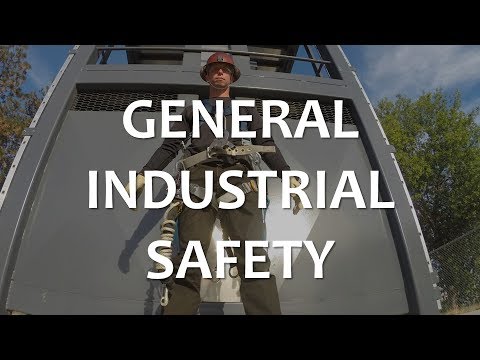ICL – UK 30 Hours General Industry OSHA standard

This OSHA standard 30-Hour General Industry course is designed to educate workers on workplace and jobsite safety. Specifically, those who successfully complete this specialized training should become familiar with recognizing, avoiding, preventing and stopping potential jobsite hazards. OSHA standard ensure that workers at all responsibility levels and across all industries receive education about common workplace hazards with this OSHA standard 30 hours General Industry Training.
Who Needs OSHA standard 30-Hour General Industry Training?
In an effort to maintain workplace safety and hazard recognition standards, OSHA standard recommends regular workplace safety training. This OSHA standard -authorized course can benefit workers in the following fields: factory operations, manufacturing, storage, warehousing, health care and more.
What’s Covered in OSHA standard 30-Hour General Industry Training?
You’ll learn about:
Occupational Safety and Health Training Program 30 hours
•
• 30 hours of training in occupational safety and health
• Stakeholders: engineers, managers, supervisors, technicians and those interested in the field of public safety, occupational health, factories, and companies.
• Public safety materials will be presented as well as some devices used in the measurement
• Training on first aid and a special game for that, displaying the ambulance bag and its contents
• Training in firefighting using fire extinguishers, if available, in a safe place and according to the types used
Showing educational films about the training material.
| No | Course name | Duration | Examination | Certificate National /International | Course Material and Outline | |
| General industry 30 hours | 4 to 5 days | Post and pre |
| No. | Course name | Course material | Out line |
| 01 | General industry 30 hours | Definition of Chemical Hazards | • Identification of hazard • Factors that increase the hazard of substances • Ways of entry into the body • Methods of obtaining information MSDS • Ways to avoid chemical hazards Symptoms of exposure to the substance |
| 02 | Handling flammable liquids | • Classification of flammable liquids Methods of controlling ignition sources • Storage • handling | |
| 03 | Compressed gases | Types of compressed gases • Hazards of compressed gases •Methods of prevention of gas • Storage Methods | |
| 04 | PPE Personal protective equipment’s | • Introduction • Methods of risk control • Before use Types of personal protective equipment | |
| 05 | Electrical safety and health | • Terms in Electricity Injuries caused by electricity • Electricity Hazards | |
| 06 | Personal tools and equipment’s | • Responsibilities • Technician Responsibilities ..Types of personal tools • Hand tools • Dangers of hand tools • The dangers of electrical tools | |
| 07 | Machine guarding | • Responsibilities • Causes of machine accidents • places of danger • Methods of protection • Protection requirements | |
| 08 | Welding safety | • Welding Hazards • smoke and gases • Electroshocks • Radiation • noise • Burns and fire | |
| 09 | Lock Out Tag Out | • Definitions The five deadly causes when carrying out repair or maintenance work •Types of energy • Closing steps •carrying out work • Specifications of Lock tools or tags ( label) | |
| 10 | Confined Spaces | • Define confined spaces • Definition of entry Causes of deaths in confined spaces • Types of confined spaces • types of dangers • Pre-entry •Access | |
| 11 | Back protection | • Safe Methods of loading material and carrying • Methods of lifting materials • Safe Methods of lifting | |
| 12 | Heat and Cold protection | • Ways the body obtains heat • Methods of cooling the body • Conditions that affect the body’s cooling system • Health problems related to the heat • Ways to prevent extreme heat • The real indicator of heat | |
| 13 | First Aid | • Definition of First Aid First aid goals • Correct handling of the injured • BEFORE HELP • When providing assistance • bleeding • Shock Muscle sprain and tear • Fractures and dislocations of the joints • poisoning • electric shock • Chemical burns First-degree burns • Second-degree burns Third-degree burns Burns treatment | |
| 14 | Firefighting | • Fire Triangle • fire rating • Types of fire extinguishers • fire response Evacuation |

